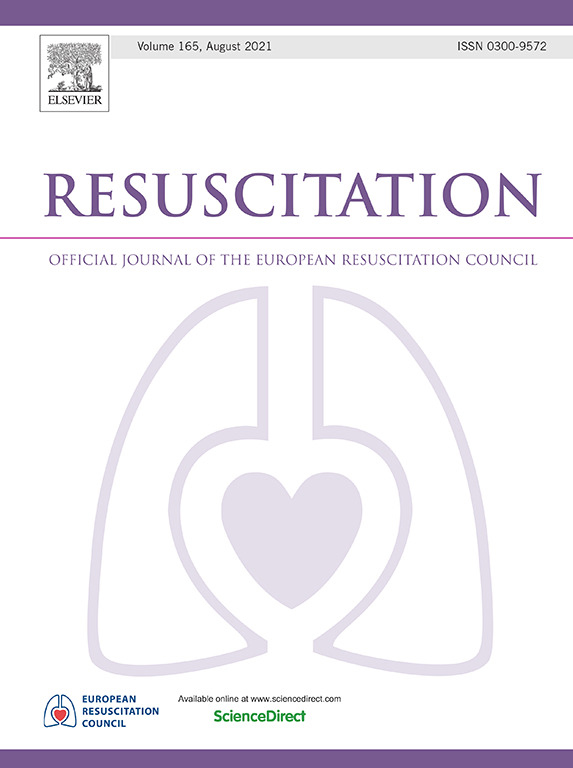早产儿脐带夹紧前的呼吸稳定:系统综述和网络荟萃分析。
IF 4.6
1区 医学
Q1 CRITICAL CARE MEDICINE
引用次数: 0
摘要
目的:评价延迟脐带夹紧(DCC)与脐带挤奶(UCM)的比较效果;基于时间的脐带夹紧与呼吸支持在脐带夹紧(TBCC)和基于生理的脐带夹紧(PBCC)早产儿。方法:Medline、Embase和CENTRAL检索至2025年4月。采用贝叶斯随机效应网络元分析(NMA)。评估30 - 60秒DCC (DCC_60),呼吸支持至少60秒TBCC (DCC_ICR_60)或更长时间(DCC_ICR_more_60), PBCC, UCM和立即脐带夹紧(ICC)。结果:纳入11项随机对照试验和8项非随机对照试验。在死亡率、严重IVH和MBI方面不能排除临床利弊。与DCC_ICR_60(非常低确定性)相比,DCC_60可能降低心室周围白质软化症(PVL)和坏死性小肠结肠炎(NEC)≥2期的风险。与DCC_ICR_60和DCC_60相比,PBCC可能降低了产房肾上腺素的风险(非常低确定性)。DCC_ICR_more_60和UCM在平均入院温度方面的疗效可能相似(中等确定性)。DCC_60,大多数TBCC干预和PBCC可能在动脉导管未闭需要干预、输血需求和支气管肺发育不良方面具有相似的效果(中等确定性)。与ICC相比,DCC_ICR_more_60可能降低了校正年龄2岁时死亡或神经发育障碍的风险(低确定性)。结论:该NMA表明,DCC、TBCC和PBCC可能对早产儿的重要临床结局有相当的影响。由于关键结果的证据确定性非常低,因此有必要进行足够有力的多中心随机对照试验。本文章由计算机程序翻译,如有差异,请以英文原文为准。
Respiratory stabilization before umbilical cord clamping in preterm neonates: a systematic review and network meta-analysis
Aim
To evaluate the comparative effectiveness of deferred cord clamping (DCC), umbilical cord milking (UCM); time-based cord clamping with respiratory support prior to umbilical cord clamping (TBCC) and physiological-based cord clamping (PBCC) in preterm neonates.
Methods
Medline, Embase and CENTRAL were searched until April 2025. Bayesian random effects network meta-analysis (NMA) was utilized. DCC for 30–60 s (DCC_60), TBCC with respiratory support for at least 60 s (DCC_ICR_60) or more (DCC_ICR_more_60), PBCC, UCM and immediate cord clamping (ICC) were evaluated.
Results
11 RCTs and 8 non-RCTs were included. Clinical benefit or harm could not be ruled out for mortality, severe IVH and MBI. DCC_60 possibly decreased the risk of periventricular leukomalacia (PVL) and necrotising enterocolitis (NEC) ≥ stage 2 compared to DCC_ICR_60 (very low-certainty). PBCC possibly decreased the risk of delivery room adrenaline compared to DCC_ICR_60 and DCC_60 (very low-certainty). DCC_ICR_more_60 and UCM were probably similar in efficacy with respect to mean admission temperature (moderate-certainty). DCC_60, most TBCC interventions and PBCC probably had similar effect on patent ductus arteriosus requiring intervention, blood transfusion requirement and bronchopulmonary dysplasia (moderate-certainty). DCC_ICR_more_60 compared to ICC possibly decreased the risk of mortality or neurodevelopmental impairment at 2 years’ corrected age (low-certainty).
Conclusions
This NMA indicates that DCC, TBCC and PBCC probably have comparable effects on the important clinical outcomes in preterm neonates. Since the evidence certainty was very low for the critical outcomes, adequately powered multi-centric RCTs are warranted.
求助全文
通过发布文献求助,成功后即可免费获取论文全文。
去求助
来源期刊

Resuscitation
医学-急救医学
CiteScore
12.00
自引率
18.50%
发文量
556
审稿时长
21 days
期刊介绍:
Resuscitation is a monthly international and interdisciplinary medical journal. The papers published deal with the aetiology, pathophysiology and prevention of cardiac arrest, resuscitation training, clinical resuscitation, and experimental resuscitation research, although papers relating to animal studies will be published only if they are of exceptional interest and related directly to clinical cardiopulmonary resuscitation. Papers relating to trauma are published occasionally but the majority of these concern traumatic cardiac arrest.
 求助内容:
求助内容: 应助结果提醒方式:
应助结果提醒方式:


